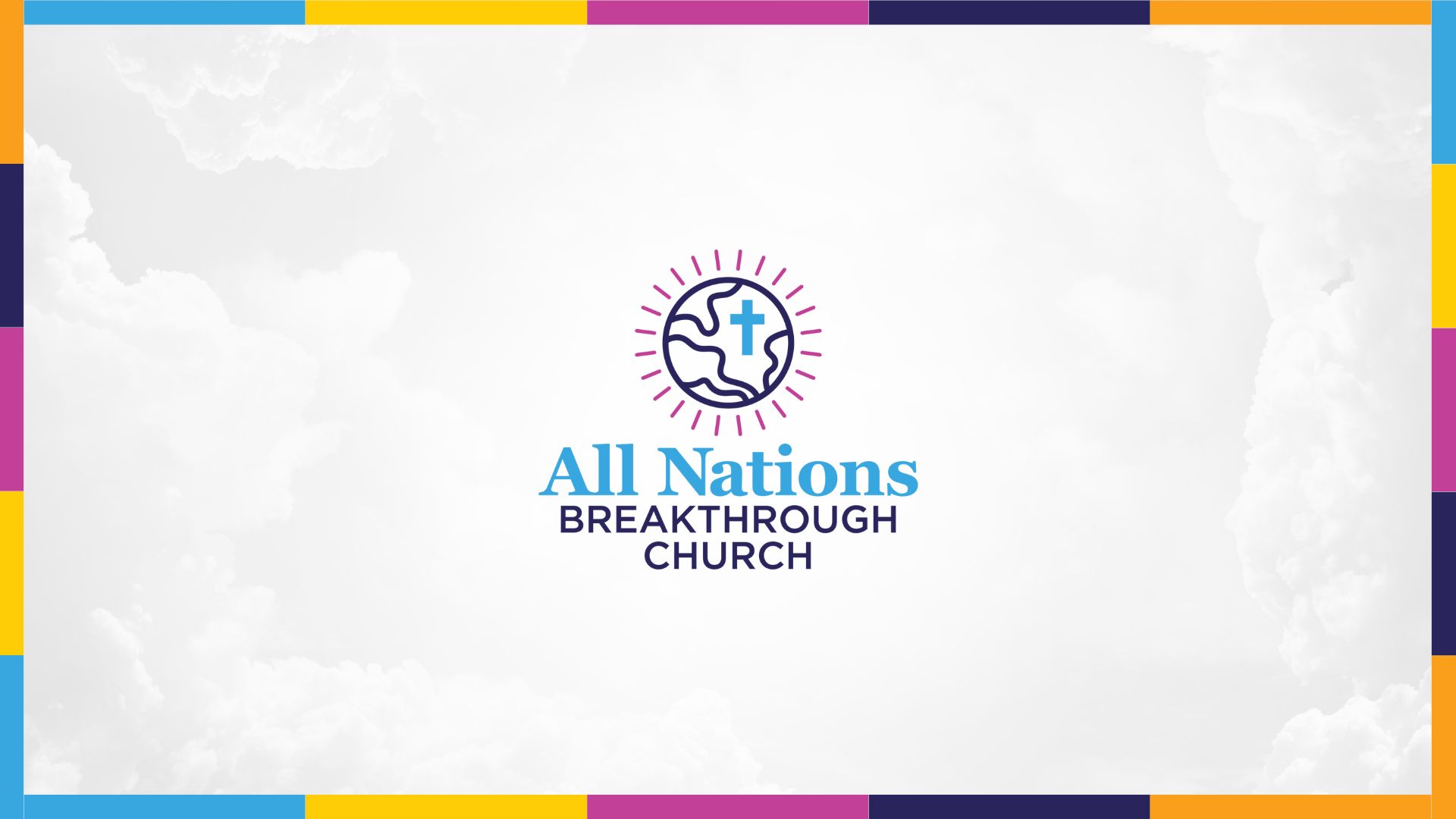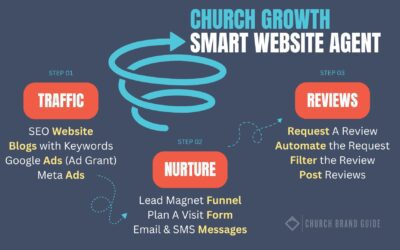In today’s digital world, churches face a unique challenge: staying connected with their congregation while reaching new members. Email marketing offers a powerful solution, with 99% of users checking their email daily and religious organizations seeing an impressive 40% email open rate.
Your Message Matters
Your church’s message matters too much to get lost in social media algorithms or forgotten announcements. Email marketing lets you speak directly to your community, share your mission, and build lasting relationships with both current and potential members.
This guide will help you use email marketing effectively to:
- Strengthen your congregation’s engagement
- Welcome new visitors warmly
- Share important updates and events
- Build deeper connections with your community
- Track and improve your outreach efforts
Ready to learn how email can transform your church’s communication? Let’s explore the strategies, tools, and best practices that will help you reach more people with your message.
Why Emails Work
Churches today face a unique challenge: getting their message heard in an increasingly noisy digital world.
While social media posts disappear quickly and printed bulletins often end up forgotten, email remains a powerful way to reach people where they already are – their inbox.
Studies show that email marketing delivers an impressive $36 return for every $1 spent, making it one of the most effective communication tools available.
For churches specifically, email open rates average 25% – significantly higher than most industries.
Your members check their email multiple times daily. This creates natural opportunities to share announcements, encourage spiritual growth, and build stronger connections with your congregation.
Unlike social media algorithms that limit your reach, email gives you direct access to communicate with your community.
Many churches struggle with consistent communication and member engagement.
Some rely solely on Sunday announcements or printed materials, missing chances to connect throughout the week. Others feel overwhelmed by technology or worry about sending too many messages.
This guide will show you practical ways to use email marketing to grow your church and engage your community effectively.
You’ll learn proven strategies that work specifically for faith-based organizations, helping you build stronger relationships with both members and visitors.
Why Churches Should Use Email Marketing
Email marketing gives churches a powerful way to connect with members directly in their inboxes.
Churches can use email to strengthen relationships through consistent weekly communication.
You can share devotionals, prayer requests, upcoming events, and volunteer opportunities – all while spending far less than traditional printed materials.
A typical church newsletter costs $2-3 per copy to print and mail, while email marketing platforms let you reach thousands for less than $50 per month.
The ability to track and measure engagement sets email apart from other communication methods. Modern email platforms show you exactly who’s opening messages, clicking links, and engaging with content. This valuable data helps you understand what resonates with your community and adjust your approach accordingly.
Email automation saves time while nurturing relationships. You can set up automatic welcome messages for new visitors, birthday greetings, and anniversary remembrances.
These personal touches help people feel valued and connected to your church family without requiring manual effort for each message.
Building an email list also creates a lasting church asset. Unlike social media followers that platforms control, your email list belongs to your church. This gives you a reliable way to reach your community regardless of changes in social media algorithms or platforms.
The numbers prove email’s effectiveness: religious organizations see an average 28% open rate – higher than most other industries.
This direct line of communication helps churches grow attendance, increase giving, and strengthen community connections in measurable ways.

All Nations Breakthrough Church
All Nations Breakthrough Church partnered with Church Brand Guide to strengthen their brand, improve communication, and increase engagement within their congregation.
The church needed a clearer way to keep their members informed and inspired so they would participate more in events, initiatives, and weekly church life.
Church Brand Guide helped them solve this by creating a professional new logo, building a modern website, and providing ongoing support with graphics and communication strategy.
A key part of the solution was implementing a weekly email newsletter using the built-in email marketing tools from the Church Brand Guide smart website platform.
This simple system allows the church admin to easily assemble updates, event details, and a mid-week devotion from the pastor—helping the church stay connected all week long.
As a result of these improvements, All Nations Breakthrough Church experienced significant benefits:
Greater event participation thanks to regular reminders and clear communication.
More care and connection as the congregation received meaningful updates and value every week.
Spiritual encouragement mid-week through the pastor’s devotionals delivered straight to their inbox.
A streamlined communication process that lives inside their website, making it easy to manage and publish.
A consistent brand experience across their logo, website, graphics, and messaging.
Church Brand Guide continues to support All Nations Breakthrough Church by consulting with their team and providing the tools needed to communicate effectively.
With the integrated newsletter feature included in every website package, Church Brand Guide ensures churches have everything they need to stay connected with their people and grow engagement year-round.
Best Practices for Church Email Marketing
Start with clear goals for your email campaigns. Whether you want to boost event attendance, welcome new members, or strengthen your community, specific goals help shape your message and measure success.
Break your email list into smaller groups based on interests and involvement. New visitors need different information than long-time members. Parents might want updates about youth programs, while others focus on adult ministries.
Create a simple content calendar to plan your messages. Include weekly services, special events, and seasonal celebrations. This helps you stay organized and ensures you’re not overwhelming subscribers with too many emails.
Build your email list naturally through:
- Welcome cards during services
- Website sign-up forms
- Event registration pages
- Ministry sign-up sheets
Keep your design clean and easy to read on phones. Most people check email on mobile devices, so use:
- Large, readable fonts
- Short paragraphs
- Clear call-to-action buttons
- Plenty of white space
Set up automatic email sequences for common situations:
- Welcome series for new members
- Birthday and anniversary messages
- First-time visitor follow-ups
- Volunteer thank you notes
Send emails consistently, but don’t overdo it. Most churches find success with 1-2 emails per week. Focus on providing value in every message through:
- Inspiring devotionals
- Event highlights
- Ministry opportunities
- Community updates
Track basic metrics to improve your results:
- Open rates (aim for 25-30%)
- Click rates (target 3-5%)
- Best sending times
- Popular content types
Test different approaches to see what works best for your congregation. Try varying your subject lines, sending times, and content mix to find the right combination for your community.
Tools and Resources
MailChimp offers a free plan, making it perfect for churches just starting with email marketing. Their user-friendly interface includes drag-and-drop design tools and pre-made templates specifically for religious organizations.
Constant Contact provides specialized features for faith-based organizations, including event management and donation tracking. Their pricing starts at $20/month, with a 60-day free trial to test their platform.
For churches needing advanced automation, Klaviyo connects with church management software and offers detailed analytics. While more expensive, starting at $45/month, it excels at creating personalized communication paths for different ministry areas.
Consider these essential features when choosing your platform:
- Mobile-responsive templates
- List management tools
- Automated welcome series
- Event registration capabilities
- Donation tracking
- Integration with your church website
Free templates are available through platforms like Canva and Stripo. These tools help create professional-looking emails without a designer. Start with these basic templates:
- Weekly bulletin
- New member welcome
- Event announcements
- Ministry updates
- Volunteer coordination
Most email platforms integrate with popular church management systems like Planning Center, Church Community Builder, and Rock RMS. This connection helps maintain accurate contact lists and tracks member engagement.
Set aside 2-3 hours for initial setup, including:
- Importing your contact list
- Creating branded templates
- Setting up automated responses
- Testing on different devices
- Training key staff members
Action Steps
Start your email marketing journey with these proven steps:
Quick Start Checklist
- Choose an email platform (like Mailchimp or Constant Contact)
- Create a sign-up form for your church website
- Import your existing contact list
- Design a welcome email
- Plan your first month of content
Watch Out For These Common Mistakes
- Sending too many emails (stick to 1-2 per week)
- Using overly promotional language
- Forgetting to segment your list
- Neglecting mobile optimization
- Skipping the welcome sequence
Next Steps
- Set up your email platform account today
- Add a sign-up form to your website this week
- Write your welcome email
- Create your first content calendar
- Test everything before sending
Remember: Start small, focus on quality, and grow steadily. Your email marketing success begins with these simple steps.
Conclusion
Email marketing remains one of the most effective ways to connect with your church community. When done right, it creates lasting relationships and helps your church grow. The numbers prove it: email delivers an average return of $36 for every $1 spent, making it a smart choice for churches of all sizes.
Starting your email marketing journey doesn’t have to be complicated. Begin with a simple welcome message to new members, share weekly devotionals, or announce upcoming events. As you grow more comfortable, you can expand into automated sequences and targeted communications.
The digital age has changed how we connect, but the core mission of churches remains the same: building community and sharing faith. Email marketing simply gives you more tools to achieve these timeless goals.
Ready to strengthen your church community through email? Take the first step today by choosing an email platform and creating your initial subscriber list. Your congregation is waiting to hear from you, and your message matters more than ever.
Remember: successful church communication isn’t about fancy technology—it’s about genuine connection. Email marketing helps you make those connections more effectively, one message at a time.
Ready to start using email to grow your church?
👉 Book afree strategy call to learn how our Smart Church Website includes powerful email tools to help your church follow up automatically and reach more people consistently.
Get the Church Branding Checklist for Free
Unlock the power of effective branding with our meticulously crafted PDF Ebook.
In a world filled with constant noise and distractions, standing out is crucial. We've put together this comprehensive guide to show you how a well-designed visual identity can be the key to cutting through the clutter and reaching your audience.
Inside, you'll discover the secrets to creating the perfect website, a memorable logo, stunning photography, and eye-catching graphics that will not only capture attention but also inspire people to take their next steps.
Whether you're a pastor, marketer, or simply someone eager to make an impact, this E-book is your roadmap to success through the art of branding.
Don't miss out on this opportunity to transform your brand and connect with your audience on a whole new level.
More Podcast Episodes
How Google Reviews Help People Find Your Church (And Why You Need Them Now)
In today’s digital world, Google Reviews are essential for churches looking to connect with new members. Recent studies show that 97% of consumers use online search to find local organizations, including places of worship. For churches, these reviews serve as digital...
How a Smart Church Website Becomes Your #1 Tool for Growth in 2026
The way people find and connect with churches has changed dramatically. Today, 97% of people search online before visiting a local church, making your website the first impression most potential visitors will have. But having just any website isn't enough anymore. A...
How to Market Your Church in May: Reengage Visitors & Strengthen Your Core
May presents a perfect opportunity for churches to build on Easter's momentum and prepare for summer growth. With warmer weather and renewed spiritual interest, this month offers unique chances to connect with both visitors and long-time members. The weeks following...
Seasonal Church Marketing Strategy Leading Up to Easter
March Marketing Strategy Easter represents the biggest attendance opportunity of the year for churches. Research shows church attendance doubles on Easter Sunday compared to regular weeks, with an average increase of 102% according to LifeWay Research. Just as...
Church Logo Design Trends That Make You Stand Out
In this video, we explore the latest trends in modern church logo design that are shaping the visual identities of churches today. Discover how flat designs, bold fonts, and abstract symbolism are helping churches create simple yet powerful logos.
The Importance of a Modern Church Logo in Today’s Digital World
Watch the Podcast EpisodeA church logo is more than just a pretty picture – it's the face of your church's brand and visual identity. In today's fast-paced world, a modern church logo can appeal to both your existing members and attract new visitors. Many churches are...









